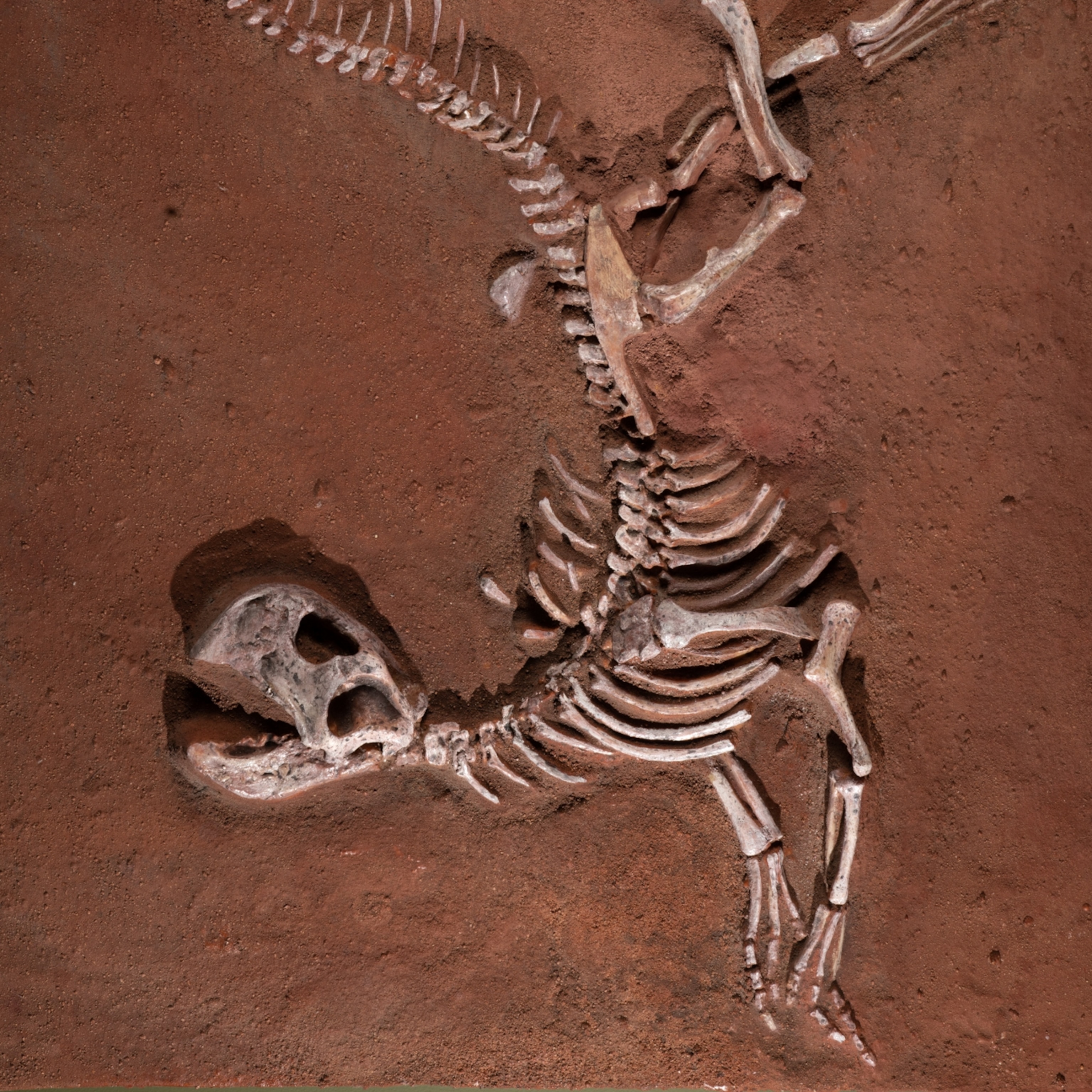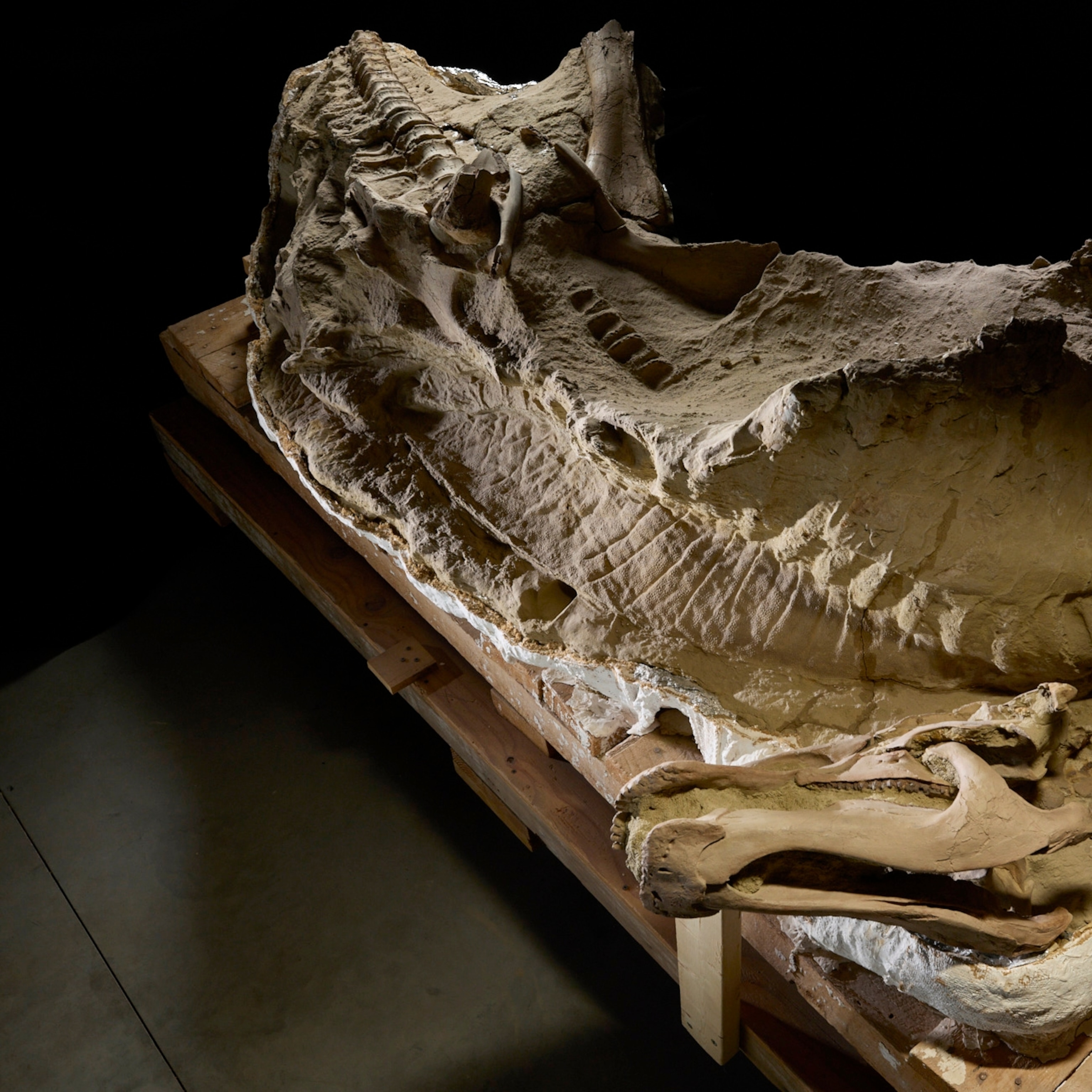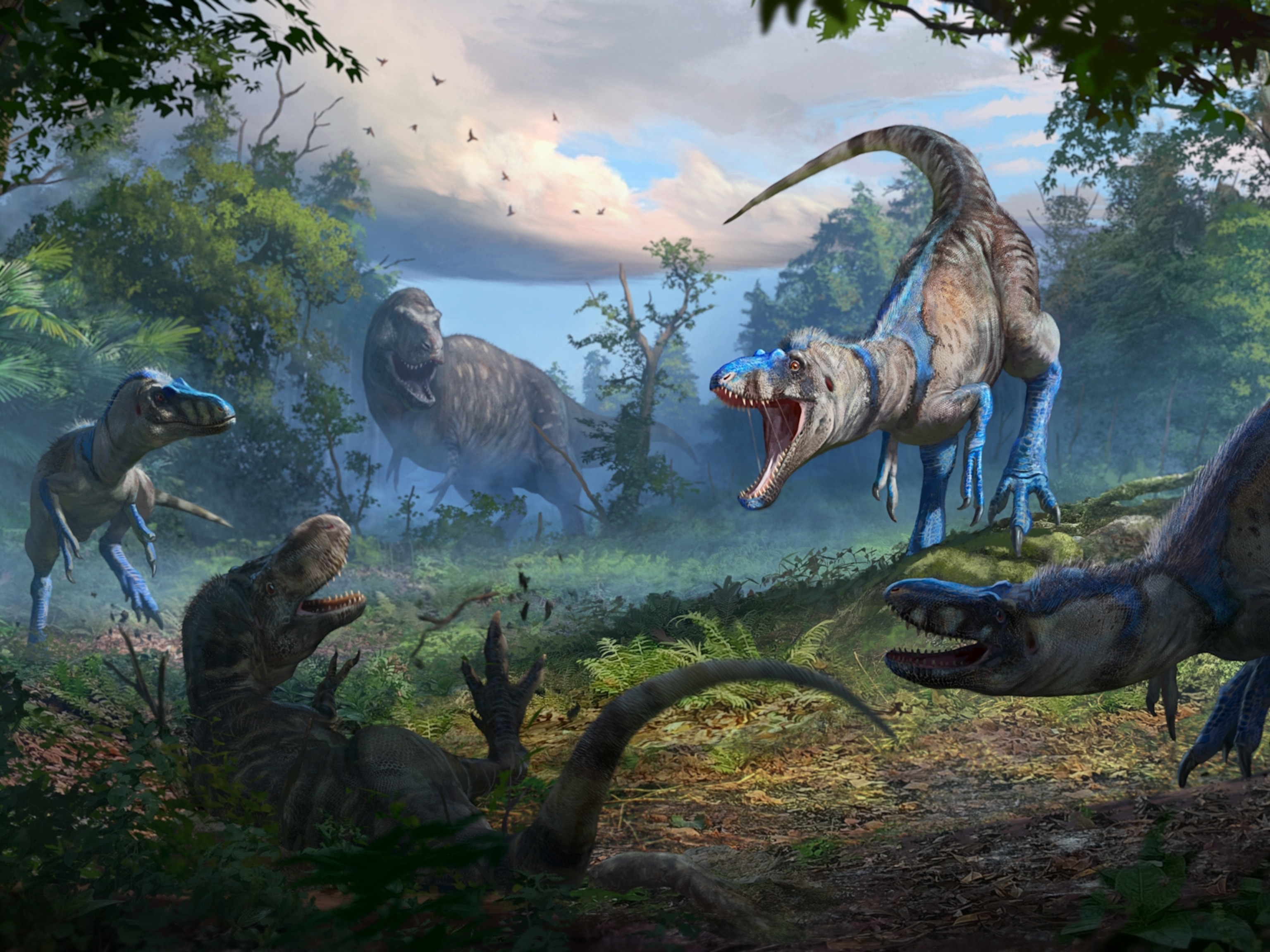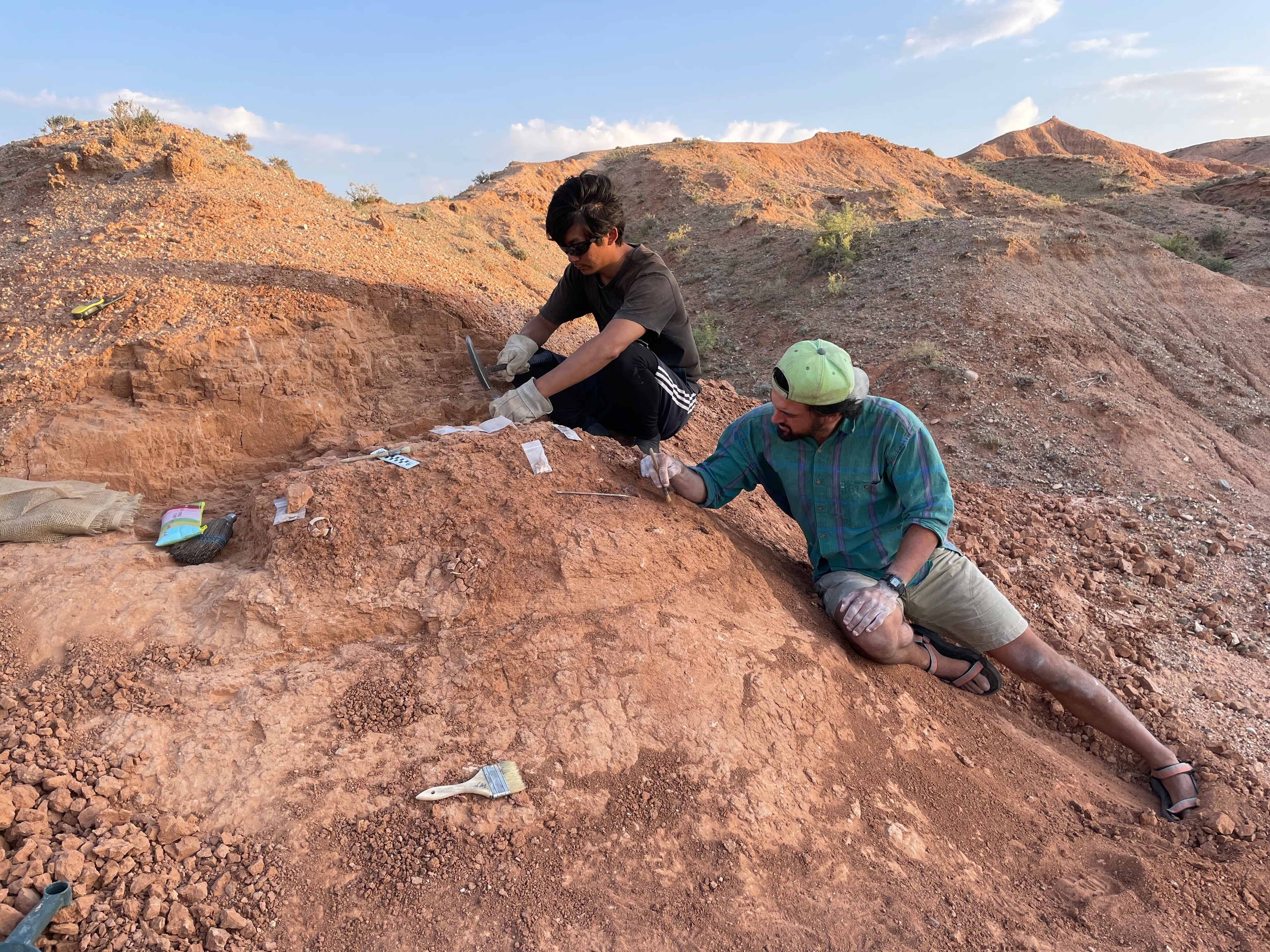
Mystery Dinosaur Finally Gets a Body
Known only from its arms until now, its surprising looks are finally revealed.
An enigma for decades, a giant dinosaur known only for its brawny arms actually towered over the local tyrannosaurs, paleontologists report. It also ate plants and perhaps sported a surprising sail or hump on its back.
The dinosaur Deinocheirus mirificus (which means, essentially, "terrible hands that look peculiar") had been a stubborn fossil enigma for nearly 50 years.
Nothing except the dinosaur's eight-foot-long arms, tipped in three huge claws, and a handful of other bone fragments had ever been found.
But at the annual Society of Vertebrate Paleontology conference held in Los Angeles last week, Korea Institute of Geoscience and Mineral Resources paleontologist Yuong-Nam Lee presented a wealth of new fossils that make Deinocheirus stranger than anyone had previously imagined. (See also "Bizarre Dinosaurs.")
The finding points to a curious environment for ancient Mongolia during the Age of Dinosaurs, a time when the region was apparently filled with oversize plant-eating dinosaurs and stalked by knife-toothed tyrannosaurs.
Jigsaw Puzzle Discovery
The original set of massive arms used to name Deinocheirus were discovered in 1965 in the roughly 70-million-year-old rock of southern Mongolia.
Whether this dinosaur was a carnivore, a herbivore, or an omnivore was unknown and open to speculation. Paleontologists eventually came to suspect that the animal was a giant member of the long-necked, beaked, bipedal "ostrich mimic" dinosaurs formally known as ornithomimosaurs.
Only additional fossils would solve the mystery. Yet years of searching failed to find anything more.
When researchers recently returned to the quarry where the arms were found, hoping to find bones that may have been missed during the earlier excavation, they turned up only a small, damaged belly rib that showed Deinocheirus had probably been eaten by the huge tyrannosaur Tarbosaurus.
No wonder there was so little left.
Keep Digging
But paleontological persistence has finally paid off. During his presentation, Lee explained that he and his colleagues have located two additional, more complete Deinocheirus specimens near the original site.
Discovered at different quarries in 2006 and 2009, the bones of these two animals have provided researchers with an almost complete look at this long-puzzling dinosaur.
The additional bones confirmed that Deinocheirus was an enormous ornithomimosaur. Lee estimated that the dinosaur stretched about 36 feet long and stood over 16 feet tall.
This makes Deinocheirus one of the tallest theropod dinosaurs ever found.
Bone Thieves
Only the feet and the skull were missing from the skeletal reconstruction that Lee presented at the meeting. Those pieces were missing only because they had been poached by looters.
According to University of Alberta paleontologist Philip Currie, who was involved in the discovery and study of these dinosaurs through the Korea-Mongolia International Dinosaur Project: "Both the specimens had been poached and lost their heads, hands, and feet, but our policy has always been to investigate each poached quarry that we find and to recover any scientifically significant material."
Even with the few missing parts, recovering new Deinocheirus fossils before they could be looted was reason for celebration. "Every specimen that we find before the poachers is also a victory for us," Currie says.
Skeleton Surprise
But size wasn't the only impressive thing about Deinocheirus. The skeletal reconstructions and life restorations that Lee showed on-screen added something no one had ever expected: Deinocheirus was a sail-backed dinosaur.
Vertebrae from the two new specimens showed that long, flat neural spines jutted upward from the middle of the dinosaur's back to create a sloping, bony sail.
No other ornithomimosaur has been found with such a structure, but other sorts of unrelated dinosaurs—such as the croc-snouted Spinosaurus and the shovel-billed Ouranosaurus—have been found with similar sails.
Some paleontologists see these structures as supporting fleshy sails that may have helped dinosaurs regulate their body temperature, while others envision the bones supporting something more like a bison's thick hump.
Lee did not comment on which sort of structure he believes that Deinocheirus possessed, although a feather-covered, fleshed-out illustration of the dinosaur bore a sizable hump.
Expert Applause
The crowded room of paleontologists applauded as this virtual model of Deinocheirus spun on-screen, giving the scientific spectators a vision of the long-armed dinosaur as it might have looked in life.
But assembling a much more complete skeleton is only the first step in understanding the natural history of long-dead Deinocheirus. Questions about how the animal actually lived will follow from the bones.
Lee did share some early evidence that suggests that Deinocheirus likely could not have been the rapacious flesh-ripper that some earlier generations of paleontologists saw it as.
More than a thousand small, polished stones were discovered around the belly region of one of the newly discovered fossils. Lee interprets these as gastroliths, or stomach stones, that the dinosaur intentionally swallowed to grind up tough plant material.
Deinocheirus was probably a towering herbivore, and, by virtue of those long arms and sail back, was one of the strangest to have ever evolved.
Sail Shocker
The new Deinocheirus fossils have yet to be formally described and published, but paleontologists at the conference were elated to see this dinosaurian enigma finally come into full view.
Stephen Brusatte, a University of Edinburgh paleontologist who was in attendance at the talk, said he was "floored" by the new find.
"People are always presenting new fossils at SVP, so you never know what to expect when you walk into a talk, but I don't think I've ever been quite as surprised by an SVP talk as I was by this one," Brusatte says.
Expecting only a few additional bits and pieces of the dinosaur, Brusatte says he was surprised by just how much Lee and colleagues had uncovered.
More than that, the dinosaur's sail was a shock. "There was just never any indication whatsoever that ornithomimosaurs, or any coelurosaur in general, had this weird feature."
Missing Skull
Most tantalizing of all are the questions that the recently uncovered fossils inspire.
Brusatte is curious about the function of the sail, how the animal ate, and how it coexisted in the same environment as other large, incredibly strange herbivore dinosaurs found in the same strata, especially another long-clawed herbivore principally known from giant arms called Therizinosaurus.
Future finds will help explore these questions. Toward the end of the talk, Lee commented that Deinocheirus bones now seem to be "abundant," and there are rumors of fossils that may fill in some of the missing pieces.
There's even a chance some critical fossils have already been found. "We still have no skull material," Brusatte says, "although there are rumors of a skull being privately collected, looted from Mongolia, and sold on the black market to a legitimate museum in Europe."
If such a skull exists, or if another fossil could be found, it would help paleontologists explore whether this dinosaur "had a weird skull befitting of its weird body," Brusatte says.
The bones presented by Lee have simultaneously solved one part of the Deinocheirus mystery and spun off new questions that will keep researchers chasing the trail of this dinosaur for years to come.
Follow Brian Switek on Twitter.








